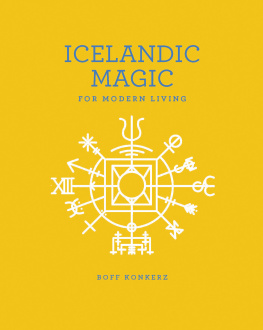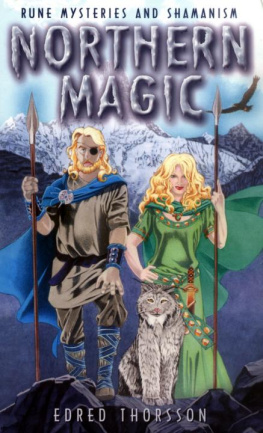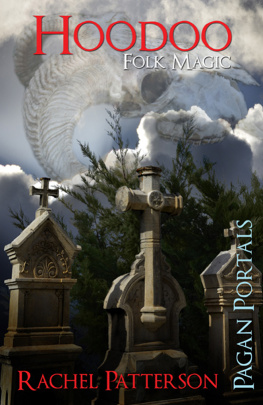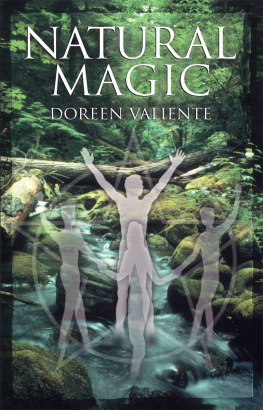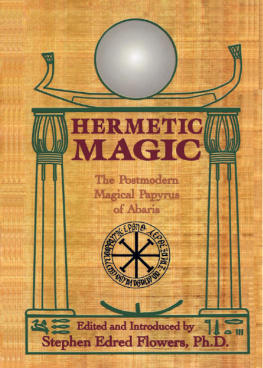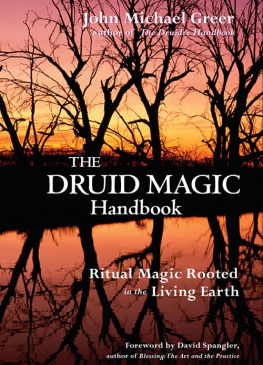|
| ch. | chapter |
| Ice. | Icelandic |
| Lat. | Latin |
| Lbs. | Landsbkasafn (= National Library of Iceland) |
| ON | Old Norse |
| PGmc. | Proto-Germanic |
| pl. | plural |
| sg. | singular |
| st. | stanza |
Orthography
Old Norse and modern Icelandic feature several letters that are not found in the Roman alphabet: , which represents an unvoiced /th/ sound (sometimes transliterated as th), and , which represents a voiced /th/ sound (sometimes transliterated as dh).
Foreign Words
Words appearing in parentheses or square brackets are Old Norse or Icelandic unless otherwise indicated. There are only slight variations in spelling between Old Norse and early modern Icelandic.
FOREWORD
Magic Manuals and Sorcerous Staves

By Michael Moynihan
Grimoires are magic manuals: handbooks for making and activating talismans, spells, and curses. A widespread phenomenon, they represent an ancient literary genre in the history of magic, witchcraft, and heretical religious practices. Countless examples have been found in Western, Middle Eastern, and Eastern cultures. Across the whole of Europe an especially robust grimoire tradition has existed for centuries and has recently been detailed in works by historians of folk belief such as Owen Davies and Claude Lecouteux. I suspect that contemporary witchcraft and occult practices such as the Gardnerian Book of Shadows or the Crowleyan Magickal Diary are, at root, attempts to follow in the footsteps ofor reinventthe older grimoire tradition, albeit in a largely subjective and ahistorical way. Countless other modern manifestations of grimoire-like texts could be cataloged in the same vein.
The word grimoire as we use it today derives from a borrowing of the Old French term gram(m)aire. This originally referred to a book written in Latin but soon came to denote a book of magic: the shift in meaning may have come about because the European grimoires were typically filled with (often garbled) Latin, not to mention smatterings of Greek and other foreign words and phrases. The word grimoire has the same origin as grammar, and a certain overlap can still be seen between them, at least in the sense of a book filled with prescriptions for proper communication, using the medium of letters and written symbols (one should not forget that both terms ultimately derive from the Greek gramma, written letter, character). In the case of a grimoire, that communication is with the hidden forces of the universe, both demonic and divine.
In addition to the inclusion of magical words from foreign languages, a common feature of many grimoires is the use of strange alphabets, ciphers, and signs to represent specific deities, demons, or other hidden forces. While many of these symbols were copied and recopied, and thereby came to constitute an inherited visual vocabulary, there was also room for the individual magician to adapt and modify such material according to personal knowledge, and even to create new symbols when needed. The symbols became further codified when grimoires began to be mechanically printed and sold clandestinely in the form of chapbooks, but this did not wipe out the older tradition in which individuals copied down their own grimoires by hand or wrote them out for others. Many such examples have been found, all the way up into the early twentieth century. As personal expressions, no two are exactly alike.
A thriving grimoire tradition has existed in Scandinavian countries since the late Middle Ages, with many surviving examples now preserved in manuscript archives. In Norway they are called black books (svartebker); in Sweden, black art books (svartkonstbcker) or sorcery books (trolldomsbcker); and in Iceland, magic books (galdrabkur). The Icelandic texts are particularly distinguished, for a galdrabk typically exhibits a striking visual element in the often elaborate galdrastafir (magic staves) that decorate its pages and which are a central component to many of the spells. While the use of symbols and graphic signatures was a well-established aspect of the continental grimoire tradition, the Icelanders developed their variety of magic staves to a unique art. And whereas the continental grimoires tend to only make reference to Greco-Mediterranean and Judeo-Christian deities and demons, the Icelandic grimoires preserve remarkable vestiges of Germanic heathen folklore. Grimoires even played a significant role in Icelandic religious history, as Magns Rafnsson explains: Almost a third of the known witchcraft trials in Iceland revolve around magical staves and signs, grimoires, and pages with occult writings. In some cases the accused owned one or more grimoires, in a few instances signs and sigils had been written on other objects, sometimes pieces of oak, gills, or even boats.
Next page


